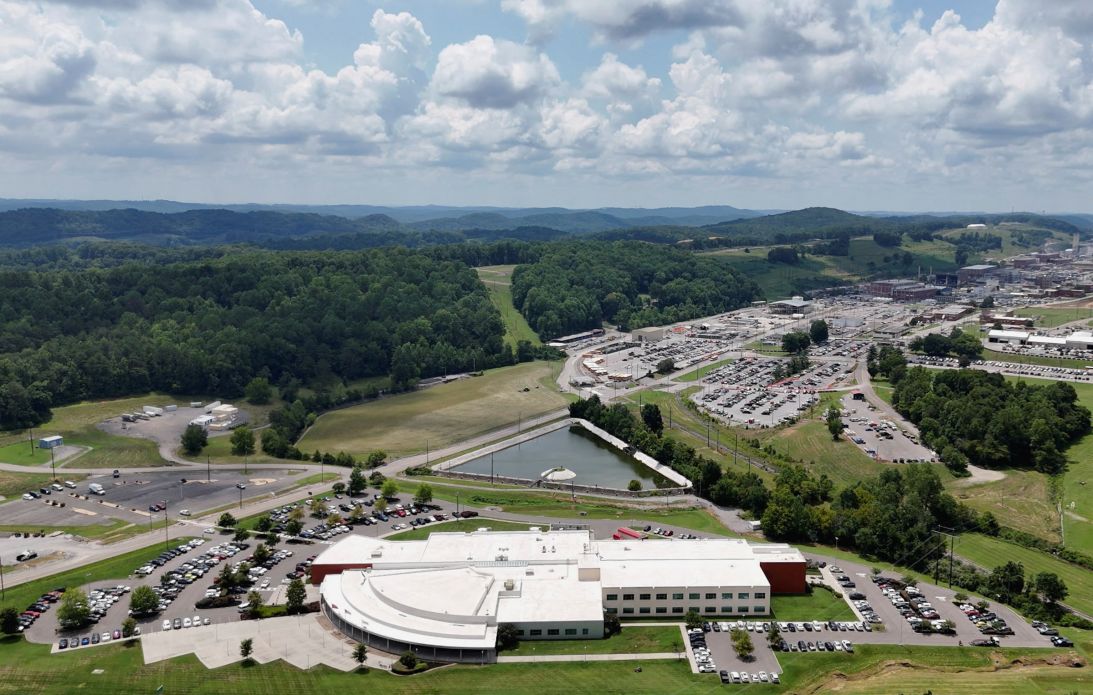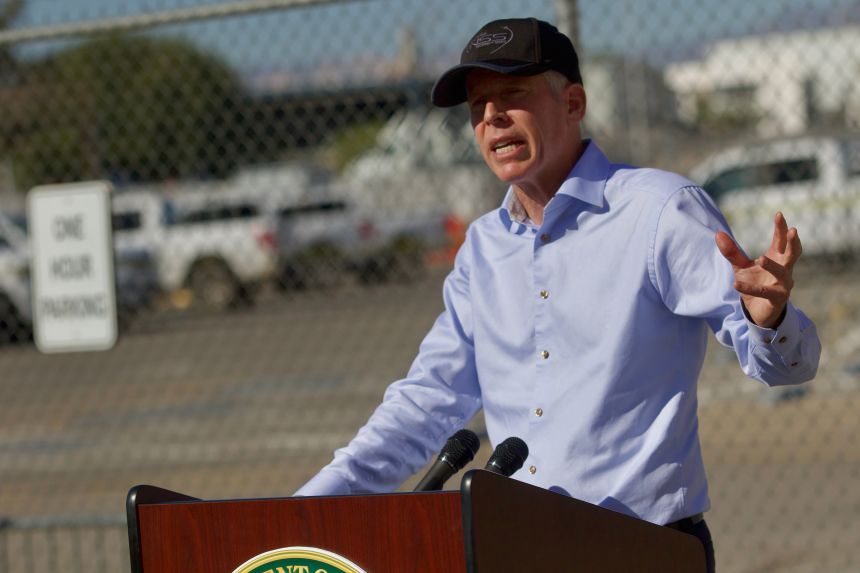Before the federal agency that builds nuclear weapons and safeguards the nation’s nuclear stockpile ran out of funding, officials there made an urgent request to the White House’s Office of Management and Budget: Use money from previously passed spending bills to prevent the agency from having to furlough its staff, three sources familiar with the matter told CNN.
The National Nuclear Security Administration’s request has not been fulfilled, the sources said, despite similar funding being used to pay US troops, Customs and Border Protection, US Coast Guard agents and other federal law enforcement officials.
Last week, NNSA furloughed most of its full-time staff, about 1,400 people — marking the first time this critical national security agency has ever experienced furloughs during a shutdown.
“While the administration was able to identify funds to keep NNSA weapons laboratories, plants, and sites operating with our contractors, legal and budgetary limitations required the administration to begin furloughing NNSA federal employees,” a spokesperson for the Department of Energy, which oversees NNSA, said in a statement.
That came as a surprise to some within the agency, where roughly $20 billion of its $25 billion budget goes towards manufacturing nuclear weapons, some of which are eventually installed on Navy cruisers and Air Force bombers.

“People were hopeful after they saw DoD move money around to pay the troops,” one agency source told CNN, referring to the Department of Defense funding reallocation. “We’re doing the same kind of national security work.”
“That money, without a doubt, would have kept all 1,400 furloughed employees on the job,” another NNSA source told CNN. Those full-time staff largely supervise and oversee the development of weapons, while others work on nuclear nonproliferation.
The agency insiders were taken aback by the furloughs in part because they haven’t been as busy as they are now in decades. President Donald Trump’s administration has ratcheted up pressure to meet tighter deadlines to deliver modernized weapons to the Pentagon, the sources told CNN. Even before Trump was elected, the Biden-era NNSA administrator told Congress the agency was “being asked to do more than at any time since the Manhattan Project.”
Now, NNSA officials fear the shutdown – the latest in a series of upheavals since Trump took office – could undermine nuclear weapons production goals set by the administration.
Even stopping production for a short period of time could set weapons deadlines back months, if not years, sources said, because safely closing work on nuclear materials like plutonium pits is a complex process that takes up to a week.
The agency was already reeling from sudden back-to-back rounds of firings and the subsequent re-hiring of hundreds of workers in February and has dealt with a prolonged hiring freeze this year.
The setbacks the administration has dealt to the agency are directly in conflict with aggressive national security targets it has set, the sources in the agency, who asked not to be named for fear of retribution, told CNN.
“If this is important to them – and they’ve said it is – they aren’t acting like it,” one of them put it.
CNN has reached out to OMB for comment asking why it has not approved the request to reprogram funds to pay NNSA’s workforce.

Stretched timelines
While most federal workers at the agency are furloughed, about 400 are excepted and working without pay.
At the same time, though, several thousand federal contractors who work on weapons building for NNSA continue to be paid, for now, through a separate funding source.
According to a separate source with knowledge of the matter, money was diverted from Trump’s one “big, beautiful bill” — the massive tax and spending package passed earlier this year – to keep contracted weapons builders paid until the end of this month.
That law contained funds allotted to nuclear modernization efforts but had legal constraints preventing the money from being used to pay full-time federal employees, that source said. On Monday, additional funds were approved to keep paying contractors through the end of November.
Although contractors can keep working for the time being, the production process will still be stalled because most federal employees who supervise, oversee and approve contractors’ work are furloughed.
That means the production process can only go so far: Further steps in production chains cannot move forward, and weapons cannot be delivered without inspection and approval from the agency’s federal employees.
There are eight sites around the country that design and manufacture various components for nuclear warheads.
Sources who spoke to CNN were particularly concerned about possible halts to activities at the Pantex plant in Texas — the primary site in the US where new nuclear weapons are assembled and old ones are disassembled — and Y-12 in Tennessee, where the nation’s enriched uranium is stored and nuclear weapons components are refurbished.
The two sites were initially projected to run out of funds next week, though the funding from Trump’s one “big, beautiful bill” has bought them a bit more time to keep running until the end of October, two sources said.
But “it’s not like there’s an infinite bucket of money; this only goes for so long,” one of those sources said.
Speaking to reporters in Nevada last week, Energy Secretary Chris Wright said the administration has scrambled to find “creative, extra funding” to keep contractors employed and nuclear facilities open.
“We’ve worked within the Trump administration – across the administration – in the DOE, in OMB, to find creative ways to keep funding to keep our contractors employed at least through the end of the month,” Wright said.
Still, there is no guarantee the shutdown will be resolved by then. And unless more funding is found, critical work building new weapons would grind to a halt, taking up precious time.
“It’s not like you can just turn off the lights and go home,” one source said. “You have to make sure everything is put away properly.”
Bringing them back online likewise takes time. This means that even a potentially short delay due to the shutdown could throw a wrench into the agency’s ability to meet carefully calibrated project timelines. Its next big deadline is to manufacture warheads for long-range standoff cruise missiles for the Air Force by 2027. Further deadlines stretch out to 2035.

‘A sense of urgency’
Even before the shutdown, NNSA was struggling to keep pace with an expanded workload under the second Trump administration.
The administration had accelerated timelines for major weapons programs to be delivered to the Department of Defense.
This year, the agency already manufactured the first modernized B61-13 gravity bomb ahead of schedule. It is now working to hit a series of upcoming milestones, including designing and building a new sea launch cruise missile for the Navy and modernizing the Navy’s W88 nuclear warhead.
There is “definitely a sense of urgency” for weapons production in the second Trump administration, one source said. “It’s felt like the mission has become much more salient; if you look at the news happening around the world, it’s easy to see why.”
But now the president’s weapons goals have become much more difficult to fulfill, sources said.
“If your adversaries see that you cannot get your stuff together to accomplish the things that you say you need for national security, in a lot of cases that can embolden an adversary,” one of them added.


